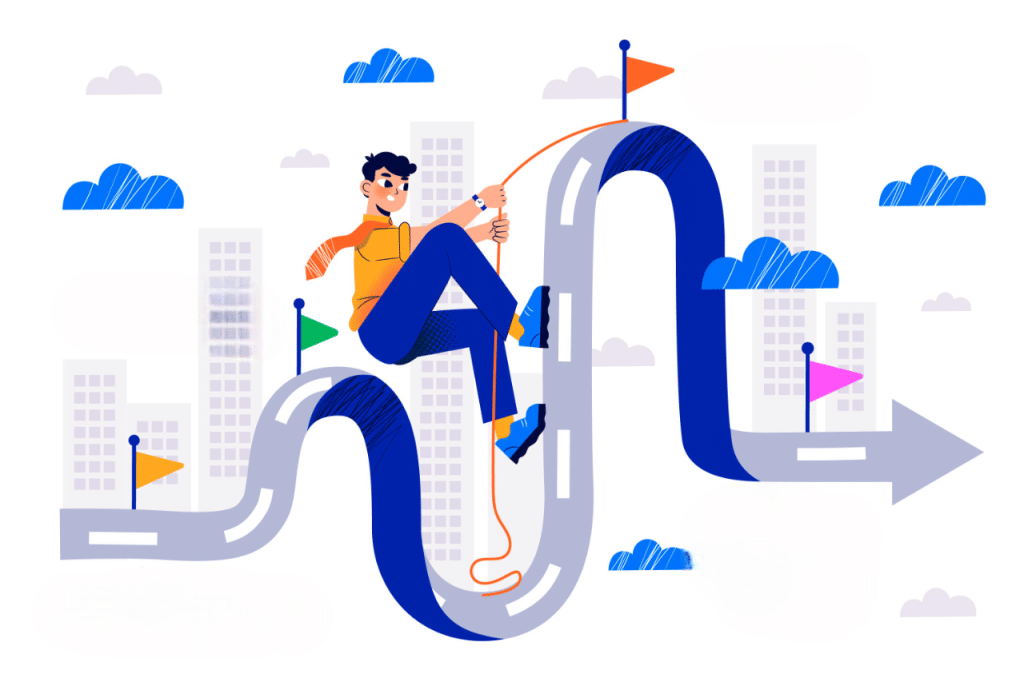Understanding the B2B customer journey is essential for businesses aiming to enhance engagement and foster long-term relationships. Unlike B2C transactions, B2B interactions often involve multiple stakeholders, longer sales cycles, and more complex decision-making processes. Mapping out this journey allows companies to identify key touchpoints, understand client needs, and tailor strategies accordingly.
Understanding the B2B Customer Journey: Beyond Linear Paths –
Unlike B2C, the B2B customer journey is a multi-stage process involving multiple stakeholders and a longer decision-making cycle. It typically includes four major stages: awareness, consideration, decision, and post-purchase. Each of these stages includes various touchpoints where prospects engage with your brand through websites, content, emails, product demos, or sales calls. Understanding these interactions allows marketers and sales teams to deliver the right message at the right time. Personalization, value-driven content, and strategic timing are the pillars of guiding B2B prospects efficiently through the funnel.
- Involves multiple stakeholders and longer decision timelines
- Requires tailored messaging at each stage of the funnel
- Post-purchase engagement is key to retention and loyalty
Mapping Touchpoints to Maximize Buyer Engagement –
Touchpoints are all the interactions a customer has with your brand, both online and offline. These include visiting your website, downloading a white paper, attending a webinar, or receiving a follow-up email. Identifying and optimizing these touchpoints helps businesses ensure a seamless experience throughout the journey. With each interaction, prospects are forming opinions—mapping these helps anticipate questions, solve pain points, and move them closer to purchase. The goal is to remove friction, deliver relevance, and build confidence at every step.
- Key touchpoints span across digital, human, and support channels
- Optimized touchpoints increase engagement and conversion rates
- Mapping improves buyer experience and marketing ROI
Using Data and Analytics to Drive Smart Decisions –
Data is the backbone of any successful B2B journey mapping strategy. Businesses can use tools like CRM systems, Google Analytics, and marketing automation platforms to monitor interactions and measure what content or touchpoint converts best. Analyzing this data allows for continuous improvement—marketers can fine-tune messaging, personalize campaigns, and allocate budgets more effectively. Insights such as time spent on a landing page or content downloaded can reveal where a prospect is in their journey and what they need next.
- Helps understand buyer behavior and intent
- Enables smarter personalization and lead scoring
- Facilitates predictive insights for future campaigns
Aligning Sales and Marketing Across the Journey –
In B2B, marketing and sales must work hand-in-hand. When both teams share insights and strategies, the transition from lead generation to lead conversion becomes more efficient. Joint planning ensures that leads nurtured by marketing are appropriately handed off to sales at the right moment. Sales can then close deals with more context and understanding of the prospect’s journey. Regular collaboration also leads to better content creation, targeted messaging, and shared KPIs that align business goals.
- Enhances lead handoff and follow-up timing
- Improves messaging consistency across departments
- Builds a unified customer view for better service
The Strategic Payoff: Building a Scalable B2B Growth Model –
When journey mapping is implemented effectively, it not only improves individual campaigns but transforms the entire sales and marketing approach. It leads to shorter sales cycles, higher conversion rates, and stronger customer relationships. Businesses gain clarity on which efforts are driving results and can scale those strategies efficiently. More importantly, it builds trust with customers through relevant, timely, and helpful interactions—paving the way for long-term growth and repeat business.
- Shortens sales cycles and improves lead quality
- Enhances customer experience and satisfaction
- Increases marketing ROI and long-term revenue growth
Conclusion –
Mapping the B2B customer journey is no longer optional—it’s a strategic necessity in today’s competitive market. With buying behaviors evolving and digital touchpoints multiplying, businesses must understand and guide their prospects through every phase with precision. From the first brand impression to post-purchase nurturing, every touchpoint shapes the relationship. By aligning sales and marketing, using data intelligently, and focusing on a seamless experience, companies can not only convert leads more effectively but also foster loyalty and advocacy. The result? Stronger pipelines, smarter strategies, and scalable, sustainable growth.

